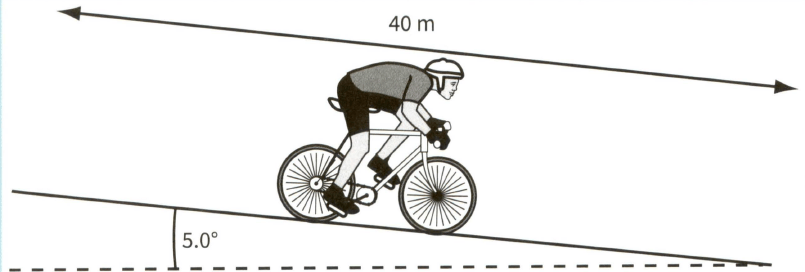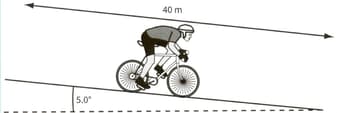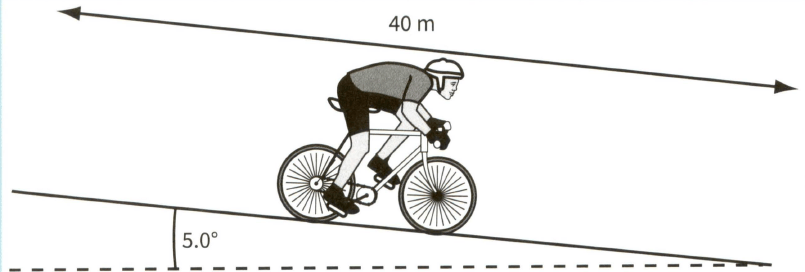(c) A car of mass starting from rest reaches a speed of in . Calculate the average power developed by the engine of the car.

Important Questions on Work, Energy and Power
A cyclist pedals a long slope which is at to the horizontal, as shown.

The cyclist starts from rest at the top of the slope and reaches a speed of after a time of , having travelled down the slope. The total mass of the cyclist and bicycle is .
(a) Calculate:
(i) The loss in gravitational potential energy as he travels down the slope.
A cyclist pedals a long slope which is at to the horizontal, as shown.

The cyclist starts from rest at the top of the slope and reaches a speed of after a time of , having travelled down the slope. The total mass of the cyclist and bicycle is . Calculate:the increase in kinetic energy as he travels down the slope.
A cyclist pedals a long slope which is at to the horizontal, as shown.

The cyclist starts from rest at the top of the slope and reaches a speed of after a time of , having travelled down the slope. The total mass of the cyclist and bicycle is . Determine the useful power output of the cyclist.
A cyclist pedals a long slope which is at to the horizontal, as shown.

The cyclist starts from rest at the top of the slope and reaches a speed of after a time of , having travelled down the slope. The total mass of the cyclist and bicycle is . Suggest one reason why the actual power output of the cyclist is larger
Explain what is meant by work.
(b) (i) Explain how the principle of conservation of energy applies to a man sliding from rest down a vertical pole, if there is a constant force of friction acting on him.
The man slides down the pole and reaches the ground after falling a distance . His potential energy at the top of the pole is . Sketch a graph to show how his gravitational potential energy varies with . Add to your graph a line to show the variation of his kinetic energy with .
Use the equations of motion to show that the kinetic energy of an object of mass moving with velocity is .
